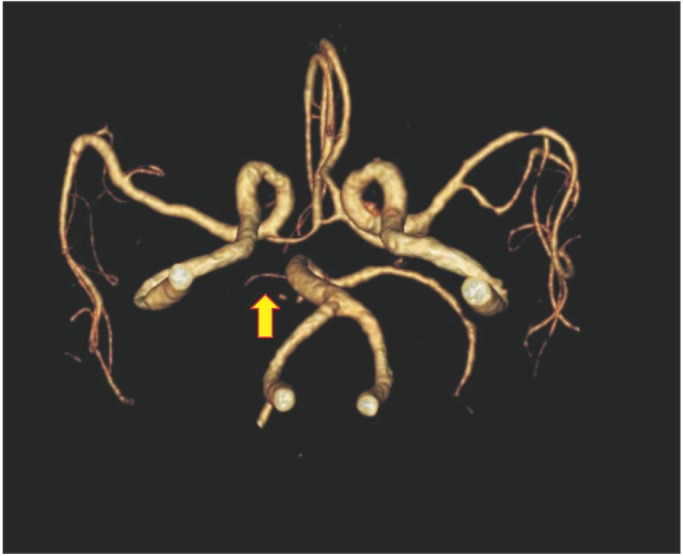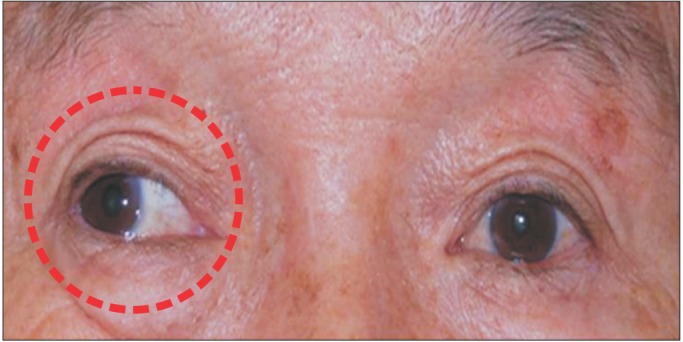Ann Rehabil Med.
2015 Dec;39(6):1033-1037. 10.5535/arm.2015.39.6.1033.
Abnormal Ocular Movement With Executive Dysfunction and Personality Change in Subject With Thalamic Infarction: A Case Report
- Affiliations
-
- 1Department of Rehabilitation Medicine, Inha University College of Medicine, Incheon, Korea. rmjung@inha.ac.kr
- KMID: 2165632
- DOI: http://doi.org/10.5535/arm.2015.39.6.1033
Abstract
- The thalamus, located between the cerebrum and midbrain, is a nuclear complex connected to the cerebral cortex that influences motor skills, cognition, and mood. The thalamus is composed of 50-60 nuclei and can be divided into four areas according to vascular supply. In addition, it can be divided into five areas according to function. Many studies have reported on a thalamic infarction causing motor or sensory changes, but few have reported on behavioral and executive aspects of the ophthalmoplegia of the thalamus. This study reports a rare case of a paramedian thalamus infarction affecting the dorsomedial area of the thalamus, manifesting as oculomotor nerve palsy, an abnormal behavioral change, and executive dysfunction. This special case is presented with a review of the anatomical basis and function of the thalamus.
Keyword
MeSH Terms
Figure
Reference
-
1. Sacco S, Marini C, Totaro R, Russo T, Cerone D, Carolei A. A population-based study of the incidence and prognosis of lacunar stroke. Neurology. 2006; 66:1335–1338. PMID: 16682663.
Article2. Herrero MT, Barcia C, Navarro JM. Functional anatomy of thalamus and basal ganglia. Childs Nerv Syst. 2002; 18:386–404. PMID: 12192499.
Article3. Schmahmann JD. Vascular syndromes of the thalamus. Stroke. 2003; 34:2264–2278. PMID: 12933968.
Article4. Bogousslavsky J, Regli F, Uske A. Thalamic infarcts: clinical syndromes, etiology, and prognosis. Neurology. 1988; 38:837–848. PMID: 3368064.
Article5. Jimenez Caballero PE. Bilateral paramedian thalamic artery infarcts: report of 10 cases. J Stroke Cerebrovasc Dis. 2010; 19:283–289. PMID: 20610185.6. Carrera E, Bogousslavsky J. The thalamus and behavior: effects of anatomically distinct strokes. Neurology. 2006; 66:1817–1823. PMID: 16801643.
Article7. Spinella M. Hypersexuality and dysexecutive syndrome after a thalamic infarct. Int J Neurosci. 2004; 114:1581–1590. PMID: 15512841.8. Mondon K, Bonnaud I, Debiais S, Brunault P, Saudeau D, de Toffol B, et al. Abrupt onset of disturbed vigilance, bilateral third nerve palsy and masturbating behaviour: a rare presentation of stroke. Emerg Med J. 2007; 24:600–601. PMID: 17652699.
Article9. Thurtell MJ, Halmagyi GM. Complete ophthalmoplegia: an unusual sign of bilateral paramedian midbrain-thalamic infarction. Stroke. 2008; 39:1355–1357. PMID: 18309144.
- Full Text Links
- Actions
-
Cited
- CITED
-
- Close
- Share
- Similar articles
-
- A Case of Bilateral Thalamic Glioma Presenting with Personality Change
- Acute Pseudobulbar Palsy After Bilateral Paramedian Thalamic Infarction: A Case Report
- Two Cases of Bilateral Thalamic Infarction
- Characteristics of Cognitive Dysfunction in Intracerebral Hemorrhagic Patients with Basal Ganglia and Thalamic Lesion
- Asymmetric Asterixis Induced by Phenytoin in a Patient with Thalamic Infarction




